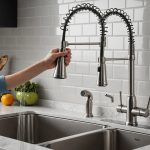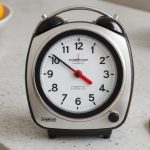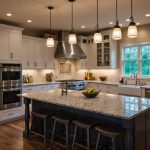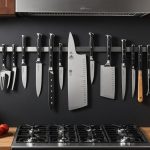Understanding the Concept of a Breakfast Bar
A breakfast bar is a versatile addition to modern kitchens, significantly enhancing both style and practicality. These structures can transform everyday dining experiences by doubling as casual dining areas or extended kitchen functionality zones. With UK kitchen trends constantly evolving, breakfast bars are now more than just places to grab a quick meal. They reflect a blend of contemporary design and practical living.
In recent UK kitchen designs, there’s a marked preference for styles that seamlessly merge with kitchen functionality. The emerging trend is to incorporate breakfast bars that not only serve as elegant design statements but also efficiently utilize the space available in a kitchen. Designers prioritize maximizing both style and function, ensuring that the breakfast bar complements the overall kitchen functionality, catering to practical needs without sacrificing aesthetics.
Have you seen this : Elevate your uk kitchen window to a verdant herb oasis: your ultimate step-by-step guide
Moreover, understanding the correct integration of a breakfast bar into your kitchen is crucial. It requires considering elements like space, design, and materials. Adapting to current UK trends, homeowners often seek options that enhance their kitchen’s appeal while remaining aligned with modern sensibilities. The fusion of style and utility is not just a design choice but a reflection of lifestyle enhancements in contemporary UK homes.
Planning Your Kitchen Space
In the quest to enhance kitchen functionality, proper kitchen space planning is essential. When integrating a breakfast bar, understanding the measurement guide ensures that the space is maximized efficiently. Start by measuring the available width, length, and height of the area intended for your breakfast bar. Adequate dimensions not only provide comfort but also maintain harmony with the rest of your kitchen.
Also to read : Mastering the art of uk kitchen design: essential tips for seamless entertaining and lively gatherings
Optimizing the layout involves considering the overall flow of the kitchen. Plan for sufficient space around the breakfast bar, ensuring that movement into, around, and out of the area remains seamless. An organized layout enhances everyday tasks and contributes to a more functional kitchen.
Traffic flow must remain unobstructed. It’s crucial to assess routes from cooking zones to dining areas, avoiding disruption and creating an accessible environment. This planning offers a more welcoming and efficient kitchen.
- Essential measurements
- Optimizing layout
- Traffic flow and accessibility
By taking precise measurements and strategically planning the kitchen layout, your breakfast bar will not only align with modern UK kitchen trends but also fit perfectly within the living space, enhancing both functionality and style.
Selecting Materials and Styles
Choosing the right breakfast bar materials is crucial to enhancing your kitchen aesthetics. In the UK, popular options include wood, stone, and laminate. Wood offers a warm and classic feel, often preferred for its robust nature and timeless appeal. For a sleek and contemporary look, stone such as granite or quartz provides durability, proving invaluable in high-traffic kitchen areas. Laminate surfaces might be more budget-friendly while still offering a wide array of stylish designs and finishes to suit diverse tastes.
When thinking about style, consider the existing design of your kitchen. Complementing the kitchen aesthetics is essential to create a harmonious look. If your kitchen features modern elements, opt for clean lines and minimalistic designs. For more traditional spaces, intricate details and ornate features may work better.
Colour schemes play a significant role in contributing to your kitchen’s ambiance. Light colours can make spaces appear larger and more inviting, while darker shades add depth and sophistication. Integrating materials and thoughtful colour schemes contributes to a cohesive design that aligns with UK design preferences.
Careful selection of materials and styles will ensure that your breakfast bar not only looks good but also remains durable, reflecting your personal taste and enhancing overall kitchen aesthetics.
Designing Your Breakfast Bar
Designing a breakfast bar involves creating a space that is both aesthetically pleasing and functional. It’s essential to integrate elements that enhance usability while maintaining alignment with current UK kitchen trends.
Layout Options
Selecting the optimal layout is vital. Consider classic options like L-shaped or peninsula designs, which efficiently utilize available kitchen space. These layouts not only maximize kitchen functionality but also promote a good flow of movement, ensuring practicality in everyday use.
Functional Elements
Incorporating functional features such as adequate storage and comfortable seating can significantly boost the versatility of your breakfast bar. Opt for built-in cabinets or shelving underneath the bar to store kitchen essentials or dining wares. Choose seating options that match the preferred style, ensuring comfort and complementing the overall breakfast bar design.
Aesthetic Considerations
To enhance your kitchen’s visual appeal, focus on decorative elements like lighting and countertop finishes. Select pendant lights to create a cosy atmosphere, and opt for countertops that blend seamlessly with your kitchen’s aesthetic. These choices should align with contemporary style preferences in the UK, contributing to a cohesive and stylish space.
DIY vs. Professional Installation
When contemplating the installation of a breakfast bar, understanding the pros and cons of DIY versus hiring a professional is crucial. Opting for a DIY kitchen project can be rewarding and cost-effective, especially for those with a knack for home improvement. DIY allows for personal creativity and flexibility, but it may require significant time and patience. You stand to save on labor costs; however, the challenge lies in having the necessary skills and tools.
On the other hand, hiring professionals brings expertise and efficiency, ensuring a high-quality finish. Professionals can handle unforeseen issues and typically have access to better materials and resources. Though more expensive upfront, this option often saves time and stress.
When to Consider Hiring Professionals
It’s advisable to hire professionals if the project involves intricate tasks, such as plumbing or electrical work. These require specific expertise and compliance with safety regulations, reducing the risk of errors and ensuring a smooth installation process.
UK Cost Estimates
In the UK, DIY projects might range from £300 to £800, depending on the size and materials. Professional installation can cost upwards of £1,000. Factoring in materials, labor, and potential unforeseen expenses is essential when planning your budget.
Budgeting for Your Breakfast Bar
Establishing a realistic budget for your breakfast bar project is critical to manage finances effectively. Understanding the breakdown of kitchen renovation costs can help in creating a balanced budget. Firstly, account for materials, which may range from affordable laminates to pricier stones like granite or quartz. Coupled with this are labor costs, which vary based on whether you opt for DIY or professional services.
Cost Breakdown
- Materials: From economical options to premium choices, the cost can differ significantly.
- Labor: DIY could save on costs but consider the investment in time and potential additional tools.
- Décor and Accessories: Budget for decorative elements like lighting and stools, which can elevate style without breaking the bank.
Tips for Savings
You can reduce expenses through strategic planning. Opt for off-season purchases or clearance sales for discounted materials. Reuse existing furniture or appliances, and focus on DIY for décor enhancements, potentially cutting costs without compromising on quality.
Being mindful of UK pricing trends, you can balance functionality and style, aligning with modern kitchen designs while keeping expenditures in check. This ensures an efficient, budget-friendly transformation of your kitchen space.
Incorporating Decor and Accessories
Enhancing your breakfast bar with thoughtful decor and accessories can elevate its appeal and maintain its functionality. Choosing the right decor elements, like vibrant wall art or decorative vases, adds personality and warmth, creating a welcoming kitchen atmosphere. Accessories such as bar stools and pendant lights not only serve a practical purpose but also contribute to overall style, ensuring a cohesive look.
Choosing the Right Decor
Carefully select decor that aligns with your existing kitchen aesthetic. Opt for items like sleek shelves for a modern touch or rustic elements for a traditional feel. Incorporate textiles, such as cushions or rugs, to add texture and comfort, making the space inviting and cosy.
Accessory Ideas
Explore utility-enhancing accessories such as spice racks or utensil holders that complement the breakfast bar design. Opt for stylish bar stools that offer comfort and support, while adjustable lighting fixtures can dramatically transform the space’s ambience.
Maintenance Tips
To keep your breakfast bar looking fresh, regularly clean surfaces and dust decor items. Use protective mats to prevent scratches and spills on countertops. Investing time in maintenance ensures that your breakfast bar remains a stunning and functional part of your kitchen for years to come.
Case Studies and Visual Inspirations
Exploring real-world case studies provides tangible examples of how a well-designed breakfast bar can transform a kitchen space. Let’s delve into some successful kitchen transformations across the UK.
Consider a London flat where a modest-sized kitchen gained a new lease on life with a sleek, peninsula breakfast bar. This addition not only maximized space but also introduced a functional dining area without cluttering the room. The use of stone countertops, complementing the existing kitchen aesthetics, demonstrated an effective blend of style and practicality.
In a spacious countryside home, the breakfast bar design incorporated an L-shaped layout. This choice allowed for ample seating and storage, proving ideal for larger gatherings. It highlighted the impact of choosing layout ideas that enhance both kitchen functionality and family interaction.
Another innovative transformation took place in a compact urban setting. Here, minimalist accessories and neutral tones created an elegant breakfast nook. This project emphasized the importance of decor and accessories in achieving a visually pleasing yet functional design.
Visual inspirations like these provide concrete design inspiration and solutions, showcasing how strategic design choices can meet diverse kitchen renovation needs while reflecting individual homeowner styles.
Understanding the Concept of a Breakfast Bar
A breakfast bar design serves as an excellent addition to any kitchen, enhancing both kitchen functionality and style. These bars provide more than just a place for a quick meal; they are essential in creating an efficient and stylish kitchen space. They reflect the latest UK kitchen trends, where multifunctional elements play a pivotal role.
Incorporating a breakfast bar effectively into a kitchen requires a harmonious blend of style and practicality. It’s crucial to choose a design that not only complements your kitchen’s aesthetic but also caters to everyday functional needs. This approach aligns with contemporary UK sensibilities, where homeowners seek to infuse elegance with everyday utility.
The latest trends indicate a shift towards integrating breakfast bars that extend kitchen usability without compromising on style. This integration is driven by the demand for kitchen functionality that meets modern living needs, ensuring that the breakfast bar is not just a standalone piece but a seamless extension of the kitchen.
- Benefits of breakfast bars:
- Enhances kitchen space
- Serves dual purposes (dining and additional preparation area)
- Complements modern design trends
Ultimately, breakfast bars reflect a lifestyle choice aiming to combine aesthetic appeal with practicality in everyday living.











